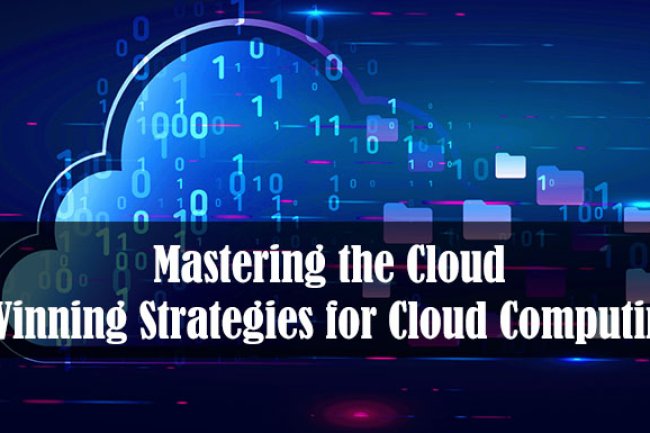Maximizing Business Potential: Cloud Computing Strategies

In today's fast-paced and digitally-driven world, cloud computing has become the backbone of modern business operations. It's not just a buzzword anymore; it's an essential tool that can help organizations of all sizes maximize efficiency, cut costs, and stay competitive. But to reap the benefits of cloud computing, you need a clear strategy. In this blog post, we'll explore various cloud computing strategies and how to choose the right one for your organization.
Understanding Cloud Computing
Before diving into strategies, let's clarify what cloud computing is. In simple terms, it's the delivery of various services – from storage to software – over the internet. Rather than owning and maintaining physical servers and data centers, organizations can rent these services from cloud providers like Amazon Web Services (AWS), Microsoft Azure, and Google Cloud.
Cloud computing is typically categorized into three main service models:
Infrastructure as a Service (IaaS): Provides virtualized computing resources over the internet. This is where you can rent virtual machines, storage, and networking.
Platform as a Service (PaaS): Offers a platform where developers can build, deploy, and manage applications. It's ideal for software development.
Software as a Service (SaaS): Delivers software applications over the internet. Users can access these applications through a web browser, eliminating the need for local installations.
Cloud Computing Strategies
1. Migration Strategy:
Lift and Shift: This strategy involves moving your existing applications and data to the cloud without significant modifications. It's a quick way to get started with cloud computing.
Re-Factoring: In this approach, you optimize your applications for the cloud. You might need to make changes to your code or architecture to fully leverage cloud capabilities.
Re-Architecting: Sometimes, it makes sense to completely redesign your applications to take full advantage of cloud-native features.
2. Multi-Cloud Strategy:
Leveraging multiple cloud providers can provide redundancy, cost optimization, and flexibility. However, it also adds complexity. Ensure you have the necessary tools for managing multiple cloud environments.
3. Hybrid Cloud Strategy: Many organizations choose to combine private and public cloud resources, creating a hybrid cloud. It's essential to manage data and workloads seamlessly between the two.
4. Security Strategy: Security should be a top priority when using the cloud. Implement robust security measures, including encryption, access control, and monitoring.
5. Cost Optimization Strategy: Cloud services can get expensive if not managed properly. Regularly monitor your usage and consider options like reserved instances for cost savings.
6. Scalability Strategy: One of the main benefits of the cloud is its scalability. Develop strategies for auto-scaling to meet changing demands without manual intervention.
7. Disaster Recovery Strategy: Cloud computing can be a vital component of your disaster recovery plan. Your data and applications can be easily replicated in the cloud, ensuring minimal downtime in case of an outage.
Choosing the Right Strategy:
Selecting the right strategy depends on your organization's unique needs, goals, and resources. Start by conducting a thorough assessment of your current IT infrastructure and business objectives. Engage with your IT team and consider seeking expert advice. Here are some key steps to follow:
1. Assessment: Evaluate your current infrastructure and identify the applications and workloads suitable for the cloud.
2. Cost Analysis: Consider the financial implications, including initial migration costs and ongoing operational expenses.
3. Security and Compliance: Ensure your chosen strategy aligns with your organization's security and compliance requirements.
4. Training and Skill Development: Assess whether your team has the necessary skills for your chosen strategy or if additional training is required.
5. Testing and Pilots: Before a full-scale migration, perform testing and pilot projects to identify potential issues and solutions.
6. Monitoring and Optimization: Continuous monitoring and optimization are essential to ensure your cloud environment is performing efficiently.
Remember that cloud computing is not a one-size-fits-all solution. Your strategy should evolve as your business needs change, and you should stay up-to-date with the latest cloud technologies and trends.
Cloud computing is a powerful tool for modern businesses, but success depends on a well-thought-out strategy. By understanding your options and aligning them with your organization's goals, you can harness the full potential of the cloud and stay ahead in today's competitive landscape.
What's Your Reaction?















